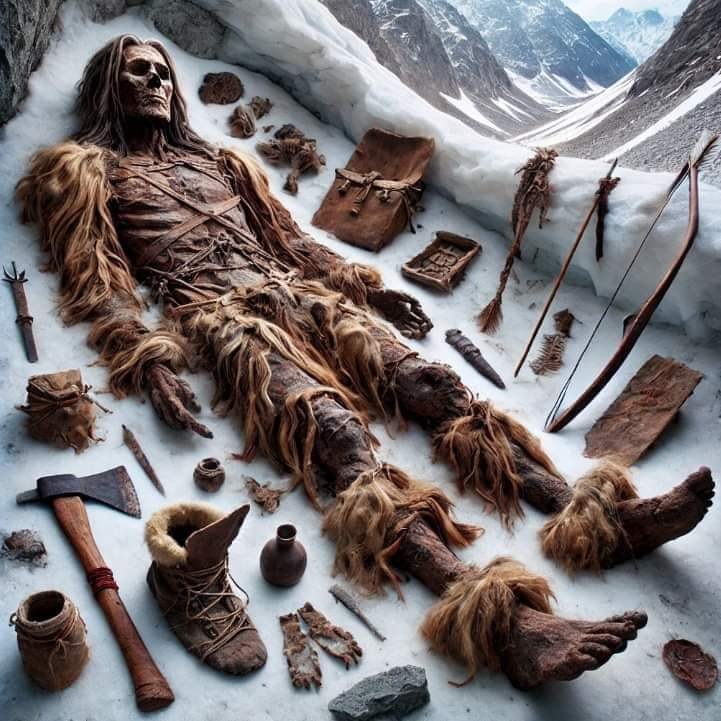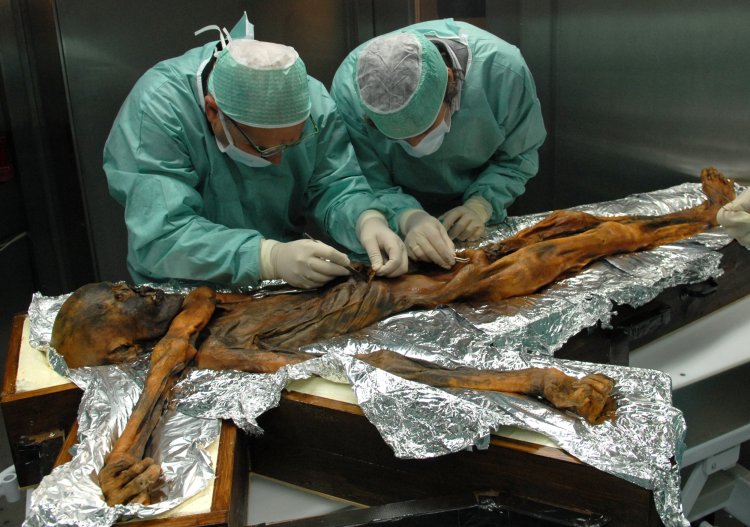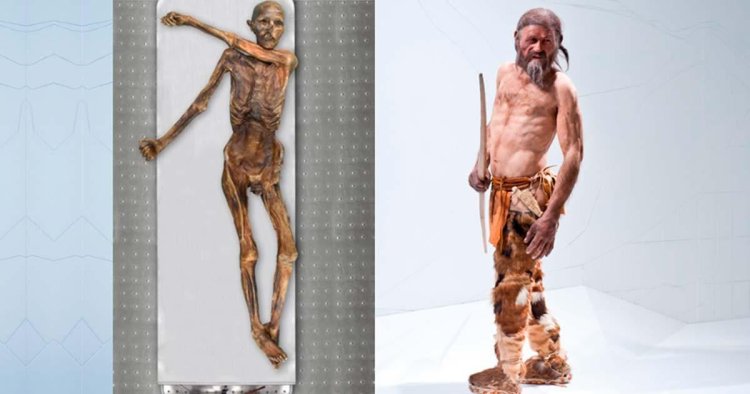Ötzi: The 5300-Year-Old Mummy Revealing Secrets of the Stone Age
Discover Ötzi, the 5300-year-old mummy revealing Stone Age life secrets.

Ötzi: The Mummy That Came Back After 5300 Years to Tell Stone Age Secrets!
Introduction

In 1991, a surprising discovery was made high in the Alps, on the border between Austria and Italy. A naturally preserved mummy of a man who lived over 5300 years ago was found in the ice, and his name is Ötzi. This astonishing find has provided an incredible window into the Stone Age, revealing secrets about the lives, tools, diets, and health of our ancient ancestors. But perhaps most intriguing of all, Ötzi’s remains tell the story of his mysterious death in what may have been a violent confrontation.
Table of Contents
- Discovery of Ötzi
- Life in the Stone Age
- Ötzi’s Diet
- Ancient Tools: Copper and Flint
- Mysterious Tattoos
- Ötzi’s Death: A Cold Case from Prehistory
Discovery of Ötzi
Ötzi was found by two hikers in the Ötztal Alps, which is where he gets his name. His body was so well preserved by the ice that initially, it was thought he was a modern hiker. However, after examining his belongings—an ancient copper axe, a flint knife, and prehistoric clothing—it became clear that this was a man from the distant past.
The discovery of Ötzi provided a unique opportunity for archaeologists and scientists to study someone from the Copper Age, shedding light on the transitional period when humans began to work with metal for the first time.
Life in the Stone Age
Through Ötzi’s body and belongings, scientists have pieced together remarkable insights into Stone Age life. Ötzi lived during a time when humans were adapting to new technologies like copper tools, yet still relied heavily on stone implements. His clothes, which included leather and grass garments, suggest a sophisticated knowledge of materials and survival techniques in harsh, mountainous environments.
The survival strategies employed by people like Ötzi in the Stone Age were closely tied to their environment, using available resources for food, shelter, and protection from the elements.
Ötzi’s Diet
One of the most fascinating discoveries was the analysis of Ötzi’s stomach contents. His last meal included wild goat meat, grains, and possibly some dried fruit. This gives us a snapshot of what a prehistoric diet might have consisted of.
Interestingly, his diet shows evidence of both farming and hunting, indicating that people of his time were using mixed strategies for survival. Cereals and wild game formed a significant part of his nutrition, showing the transition from purely hunting societies to those that began domesticating plants and animals.
Ancient Tools: Copper and Flint
Ötzi’s belongings, particularly his copper axe, were revolutionary. The axe, made of nearly pure copper, is one of the oldest examples of metal tools ever discovered. It indicates that Ötzi lived during the cusp of a technological revolution when metalworking was beginning to emerge alongside more traditional stone tools, like his flint knife.
These tools are not only examples of advanced craftsmanship but also show the evolution of human society’s ability to shape materials for various uses, from hunting to construction.
Mysterious Tattoos
Perhaps one of the more enigmatic aspects of Ötzi’s remains are the 61 tattoos found on his body. These tattoos, made by rubbing charcoal into small incisions, were located on areas prone to stress and pain, such as the back and joints. Researchers believe these tattoos may have been part of a therapeutic practice, similar to modern acupuncture, aimed at relieving pain or treating ailments like arthritis.
Ötzi’s tattoos reveal that prehistoric humans may have had knowledge of alternative medicine, using tattooing as a form of pain management and possibly ritualistic healing.
Ötzi’s Death: A Cold Case from Prehistory
Ötzi’s well-preserved body also gives us clues about how he met his end. Forensic examinations have revealed that he had an arrowhead lodged in his shoulder, which likely caused his death. Additionally, cuts and bruises on his hands suggest that he was involved in a struggle before he died.
This evidence points to a violent conflict, possibly a fight or an ambush. Scientists hypothesize that Ötzi may have been fleeing from attackers when he was struck down, his body left to freeze in the cold mountains where he was preserved for millennia.
Conclusion
The story of Ötzi offers us an unprecedented look into the Stone Age, from the tools people used to their diets, health practices, and even the conflicts they faced. Through the study of his remains, scientists have been able to unlock the secrets of a life lived over 5000 years ago, painting a detailed picture of human existence during one of the most critical periods in our evolutionary history.
Ötzi, the mummy that came back from the past, continues to shed light on the early days of human civilization and the mysteries of the prehistoric world.
FAQs

1. How old is Ötzi?
Ötzi is estimated to be over 5300 years old, dating back to around 3300 BCE.
2. What caused Ötzi’s death?
Ötzi likely died from blood loss due to an arrow wound in his shoulder. Evidence suggests a violent confrontation led to his death.
3. What were Ötzi’s tattoos used for?
It is believed that Ötzi’s tattoos were therapeutic, possibly used for pain relief similar to acupuncture.
4. What tools did Ötzi carry?
Ötzi had a copper axe, a flint knife, and other tools, marking him as part of a society transitioning into the use of metal.
For more on archaeological discoveries and the Stone Age, explore other resources on Kiksee.
What's Your Reaction?






















